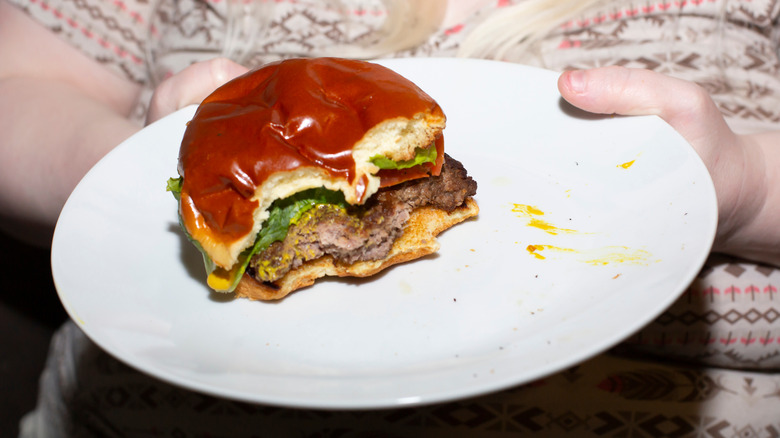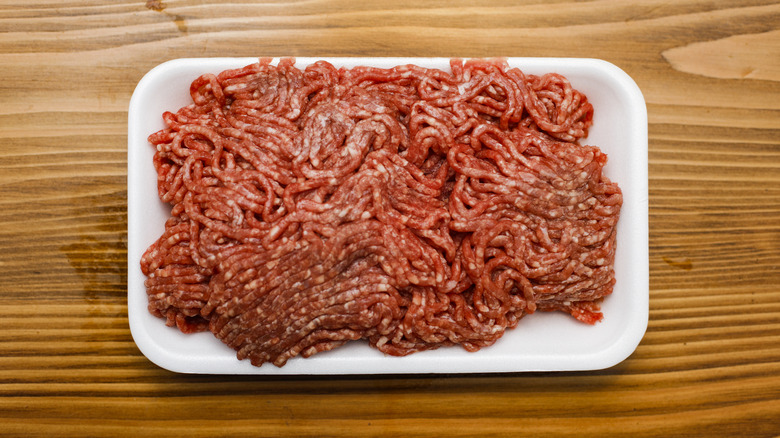Why Cooking Your Burgers Well Done Matters, According To The USDA
We may receive a commission on purchases made from links.
Ground beef is among the most versatile proteins out there, as essential to taco Tuesday as it is to Egyptian orzo pasta (it even works with sweet potato and cottage cheese). But nowhere does the protein shine brighter than in a juicy, meaty burger. While it's commonly understood that you should always cook your ground beef until there is no pink left when you're making it as meaty crumbles, people tend to bend the rules when it comes to burger patties. According to the United States Department of Agriculture (USDA), however, this practice is inadvisable — and potentially dangerous. Burgers cooked below 160 degrees Fahrenheit, or what most recognize as "well done," might still harbor "harmful bacteria that may be present" in raw ground beef, per USDA guidelines.
The only way to ensure that any potential bacteria present in your burger meat is no longer a threat is to cook your ground beef to well done status. You can ensure that the patties have reached the right internal temperature by keeping a digital, instant-read meat thermometer on hand, like this one from Ultrean. If your burgers have plumped up while cooking, you'll want to make sure the probe reaches the thickest part of the patty and keep it there for 10 to 15 seconds to get the best read. If the number does not yet read 160, keep the heat one until you patties are completely cooked and rid of any potential contaminants.
Undercooked burger patties can carry harmful bacteria
There are a few different bacterias that are prevalent in ground beef, including the two most widely known, Salmonella and E. coli (the latter being responsible for the recall of over 160,000 pounds of ground meat in 2024). These pathogens are invisible to the naked eye and put off no smell, so their presence is pretty much impossible to detect for the everyday person; but they can cause major illness if accidentally ingested. Luckily, the simple solution to ensuring your beef is bacteria-free is a lengthy stay on the grill util it reaches the USDA-approved temperature of 160 degrees Fahrenheit.
The ground beef from which burgers are made is particularly dangerous when undercooked — compared to, say, a cut of steak — because of how the meat is processed. Any of these bacteria that might be lurking on beef will likely exist on the outside of the meat. And when that beef is ground up, what was once strictly on the outer part, gets mixed in. Bacteria on the outside become bacteria all throughout.
In addition to the dangers of undercooking ground beef, the temperature the protein reaches when sitting out can also cause major quality and health concerns. is If you have let your meat sit out on the counter for longer than two hours, ground beef that did not previously host any bacteria can become contaminated. This is when perishable foods enter what the USDA calls The Danger Zone, a temperature range from 40 to 140 degrees Fahrenheit, where bacteria can experience rapid growth. So, in addition to cooking ground beef thoroughly, you've also got to keep it cold beforehand.


